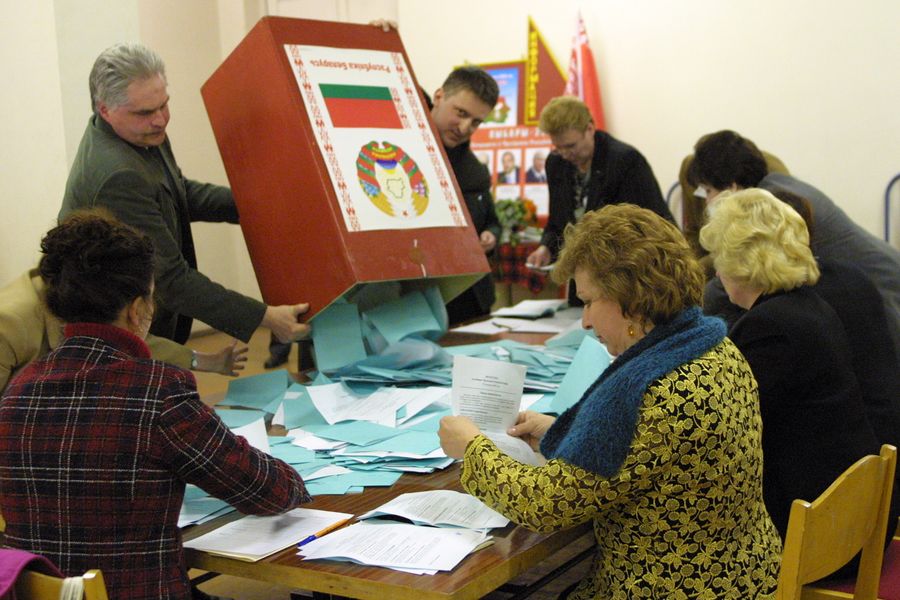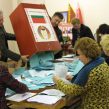
Belarusians Want Changes: But How Badly?
Publication: Eurasia Daily Monitor Volume: 7 Issue: 202
By:

There are several indications that the relatively passive Belarusian population favors fundamental changes in political and economic life. Some activists, such as presidential candidate, Andrei Sannikau, perceive a groundswell of popular sentiment that could sweep away the Lukashenka leadership in the presidential elections to be held on December 19. But how likely is such a development? Are there genuine possibilities of change in Belarus after the long presidency of Alyaksandr Lukashenka?
The most recent opinion poll issued by the Independent Institute of Social-Economic and Political Research (NISEPI), conducted on September 2-12, based on 1,527 respondents and with a margin of error of no more than 3 percent, provides some revealing results. Over one-third agreed that a personality cult of Lukashenka exists in the country, while a further 28 percent saw increasing signs of such a development. Less than a quarter maintained that no such cult existed (www.iiseps.org/data10-391.html).
Asked what sort of person should be the future president of Belarus, 43.2 percent responded that it should be a supporter of cardinal changes to the present path; as opposed to 38.2 percent who thought that the current course should be maintained. Almost 40 percent consider the country should be led by a president who will bring the country closer to the European Union, whereas less than a quarter believes that the leader should support closer integration with Russia. Almost 60 percent favor a leader who supports a market economy, with less than 15 percent preferring a backer of a planned economy, (the sort of model to be discussed at Lukashenka’s forthcoming “All-Belarusian Congress”) (www.iiseps.org/data10-391.html).
Many observers have perceived a mood of dissatisfaction in Belarus. Most notable perhaps is former Deputy Foreign Minister, Andrej Sannikau, whose campaign has now gathered more than 150,000 signatures, making him one of ten major opposition figures to have attained the 100,000 barrier, along with Uladzimir Neklyayeu, leader of the “Tell the Truth” movement and Mikola Statkevich of the Belarusian Social Democratic Party. Sannikau uses the phrase “For a normal Belarus!” on the European Belarus website, a satirical play on government propaganda, but also one that highlights the idiosyncratic path taken of late by the incumbent president (www.europeanbelarus.org, October 24).
On the website of Charter 97, Sannikau has been expanding his ideas as the campaign to collect signatures gathers pace. Most notably he focuses on the severed relations with Russia and describes Lukashenka’s economic model as “doddering” and impeding regional cooperation. Discussions of Belarusian official politicians with members of state associations in Russia have been quite common, but in mid-October, Sannikau was invited to attend a round-table debate at the Diplomatic Academy of the Russian foreign ministry, along with several delegates from “official” Belarus. During the discussion, the conference, according to Sannikau, divided into two sections: one adhered to the “old approach” and defended the recent actions of Lukashenka; but the other (the majority) focused on how Russian-Belarusian relations could be brought back to “normal.” Most notably, many delegates perceived that the state systems of Belarus and Russia were increasingly moving further apart, thanks to the decrepit economic system prevailing in the former state (www.charter97.org, October 22). In other words, economic weaknesses in Belarus elicit the need for political changes.
Sannikau bolstered his argument by commenting on the new rapprochement between Russia and the EU, citing French president Nicolas Sarkozy’s support for a common economic space between the two, with a visa-free regime (www.charter97.org, October 22). However, the Belarusian side could only participate in such a venture if there is a leadership change in Minsk. Sannikau thus appears to be relying on Belarusians’ genuine support for closer links with Europe without alienating Russia. On the contrary, he sees Russia as a close ally in the movement toward Brussels.
Meanwhile, Lukashenka seems to be rooted to the same spot. On October 22, he took part in the “Question to the President Campaign” organized by the Republic Union of Youth and the Belarusian Pioneer organization, two youth organizations officially supported by the authorities and declared that “Belarus is an island of peace and stability,” citing as he has always done the economic upheavals that occurred directly after independence in the early 1990’s and comparing that period with his own achievements. He referred to the young people, who occupy the former building of the Komsomol in Minsk, as “the first generation” to have “grown up in our young sovereign and independent state” (Belarusian Telegraph Agency, October 22). In this setting, no doubt, he felt secure from any uncomfortable questions.
In theory, then, a disgruntled population seems ready to embrace change while a president who has relied on force and manipulation to remain in power has run out of ideas. The difficulty, however, in addition to the moribund and corrupt election procedures in Belarus is the attitude of the people. Most want economic reforms, including the white-collar elite. According to one observer, everyone wants to see change, but no one believes that he/she personally is able to impart much influence or that the elections will bring it about (Belaruskiy Partizan, October 22). The task of Sannikau and others, then, is to convince the electorate that success is possible and to inculcate faith in the movement for change.
However, two qualifiers need to be made. First, a route to Europe alongside Russia does little to guarantee the continuing independent course of Belarus. And second, the Europeans now seem more prepared than ever to welcome Russia regardless of what happens in the Belarusian elections.




